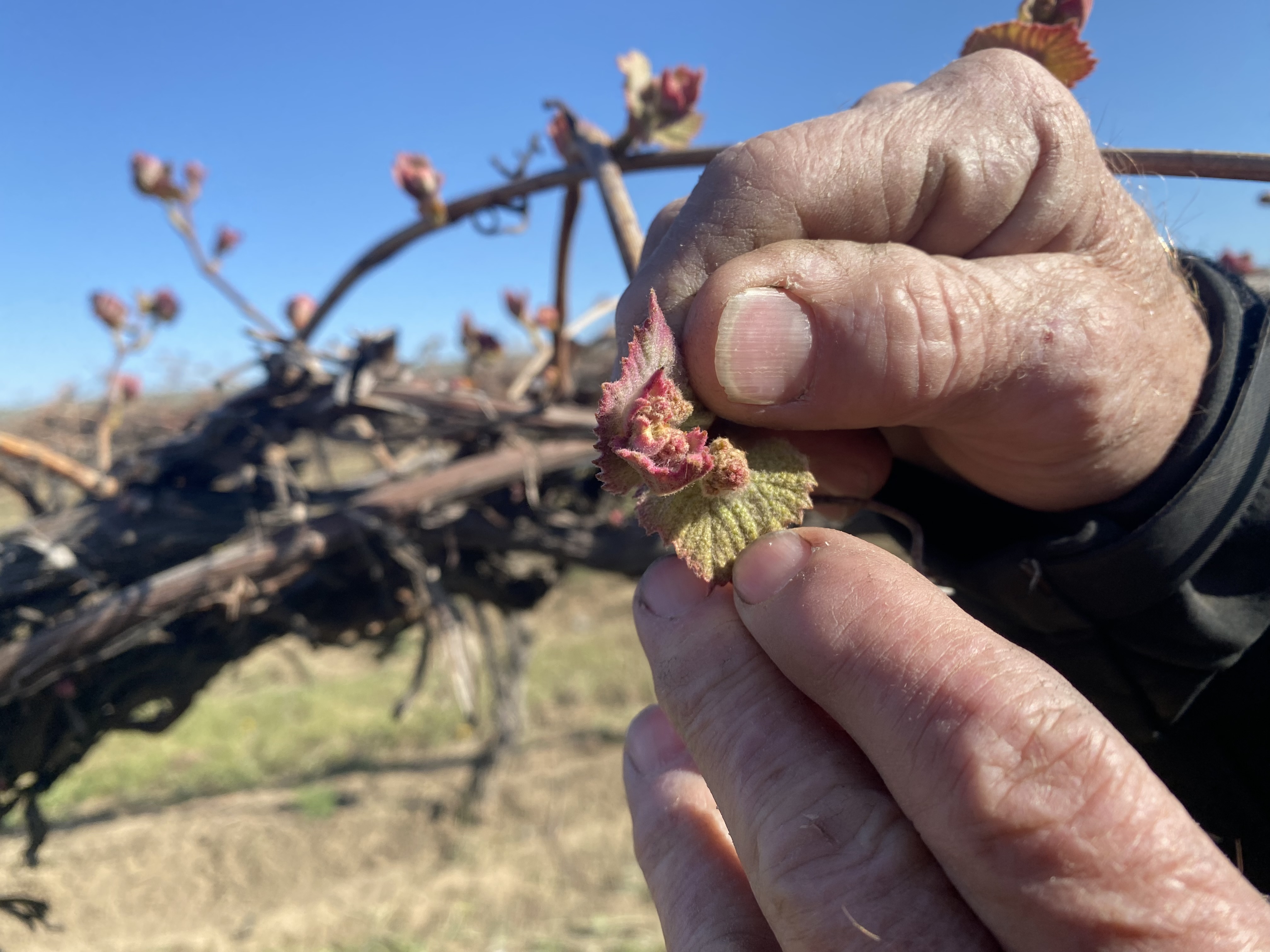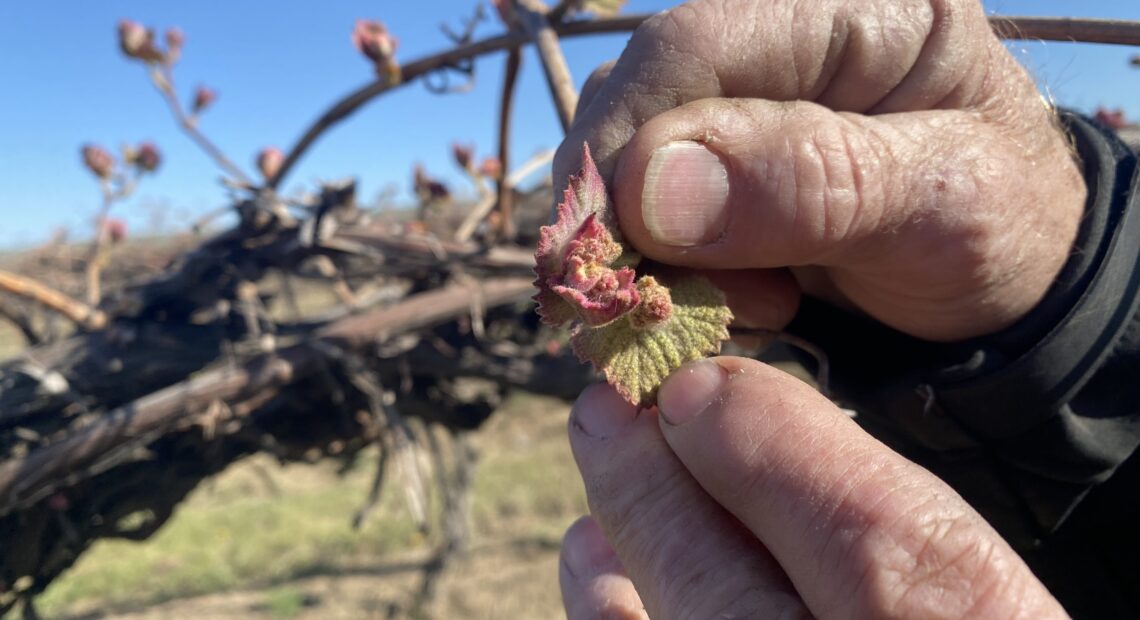
Drought expected to plague farmers in the Yakima Valley, Kittitas areas this summer
Listen
(Runtime 4:11)
Read
On the south slope of Rattlesnake Mountain in the Yakima Valley, north of Prosser, water is measured by the puny drip. Jim Willard grows mainly grapes and a few apples.
Willard wears a green with yellow writing ball cap that reads “Make Alfalfa Great Again” as he drives me about his sloped farm. He’s showing why his micro sprayers, drip-line tubing and precision watering systems that he said won’t be enough this year.
“It’s a little bit cool and breezy this morning,” Willard said. “We’ve been working in the fields the last month and have had pretty nice – too nice – of weather. You’d rather see more rain, a lot more snow up there in the mountains but that’s sort of what we’ve got for weather.”
Across the Northwest things are getting dry. In southeast Washington and northeast Oregon the cheatgrass is already tinged reddish. On the coast, it hasn’t stormed enough this spring. Moreover, the snowpack that’s low to mid-elevation is already nearly gone in much of Washington, according to the Washington State Department of Ecology.
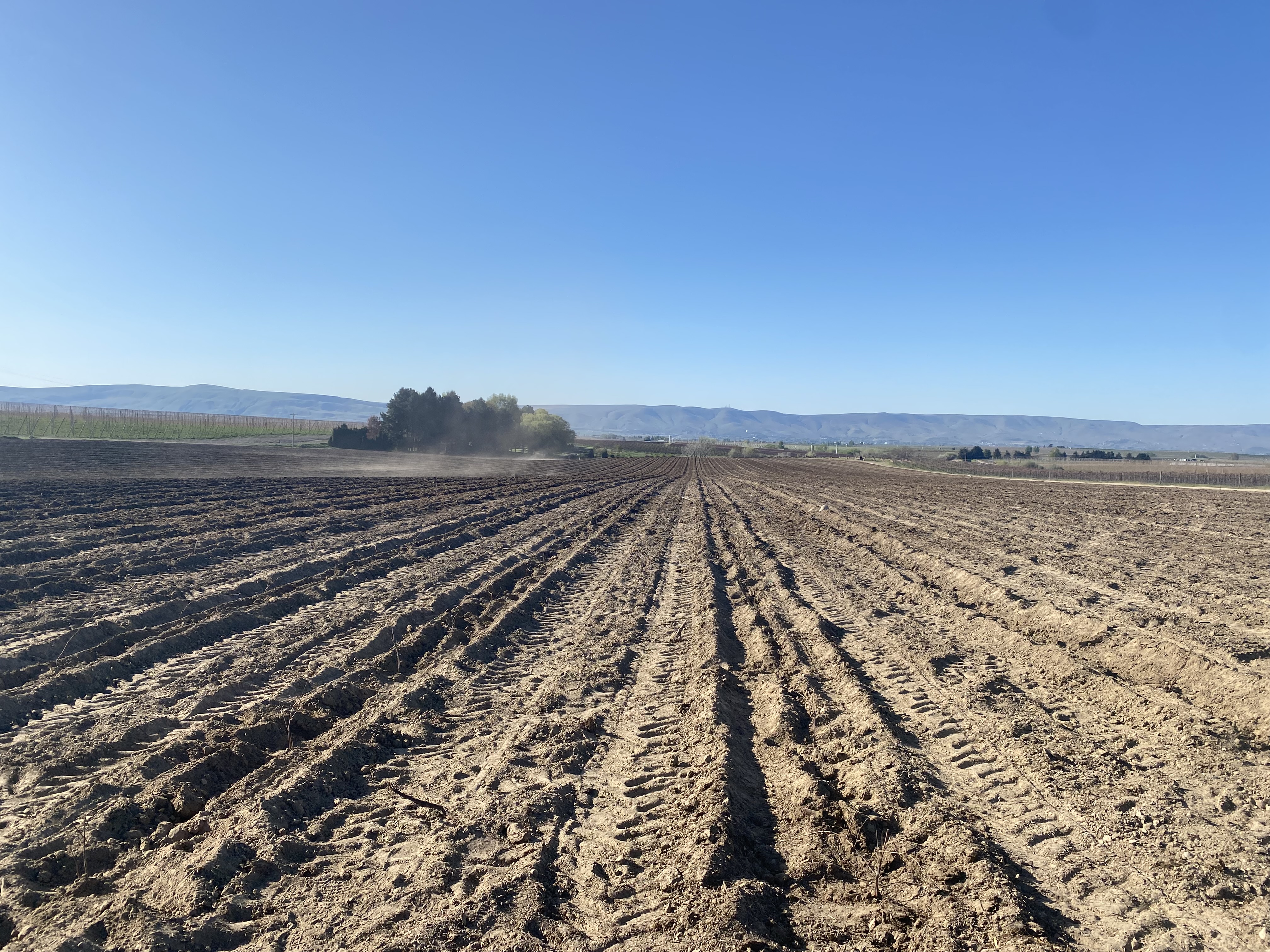
A dust devil rolls through an open expanse in late April on Jim Willard’s farm north of Prosser, Washington. This is where nearly 40-year-old pinot noir used to be rooted but Willard pushed it out because there is not enough irrigation water this year and it wasn’t as productive as some of his other crops.
(Credit: Anna King / Northwest News Network)
Willard had to push some crops, like 40-year-old pinot noir grape vines used for winemaking, out with dozers. That’s because this year, these irrigators will get only a portion of their total usual water from the Yakima River.
He and everyone else in the Roza Irrigation District, the Kittitas Reclamation District, part of the Wapato Irrigation Project and the Kennewick Irrigation District, altogether nearly 200,000 acres of ground, are junior water rights users. Meaning if there isn’t enough water in the river for fish and for senior water right users, the junior holders will get their water cut back by the U.S. Bureau of Reclamation. This year the junior irrigators are cut back to 54% of their normal water from the Yakima River.
“This block of concords I planted in 2014,” Willard motions out the truck window.
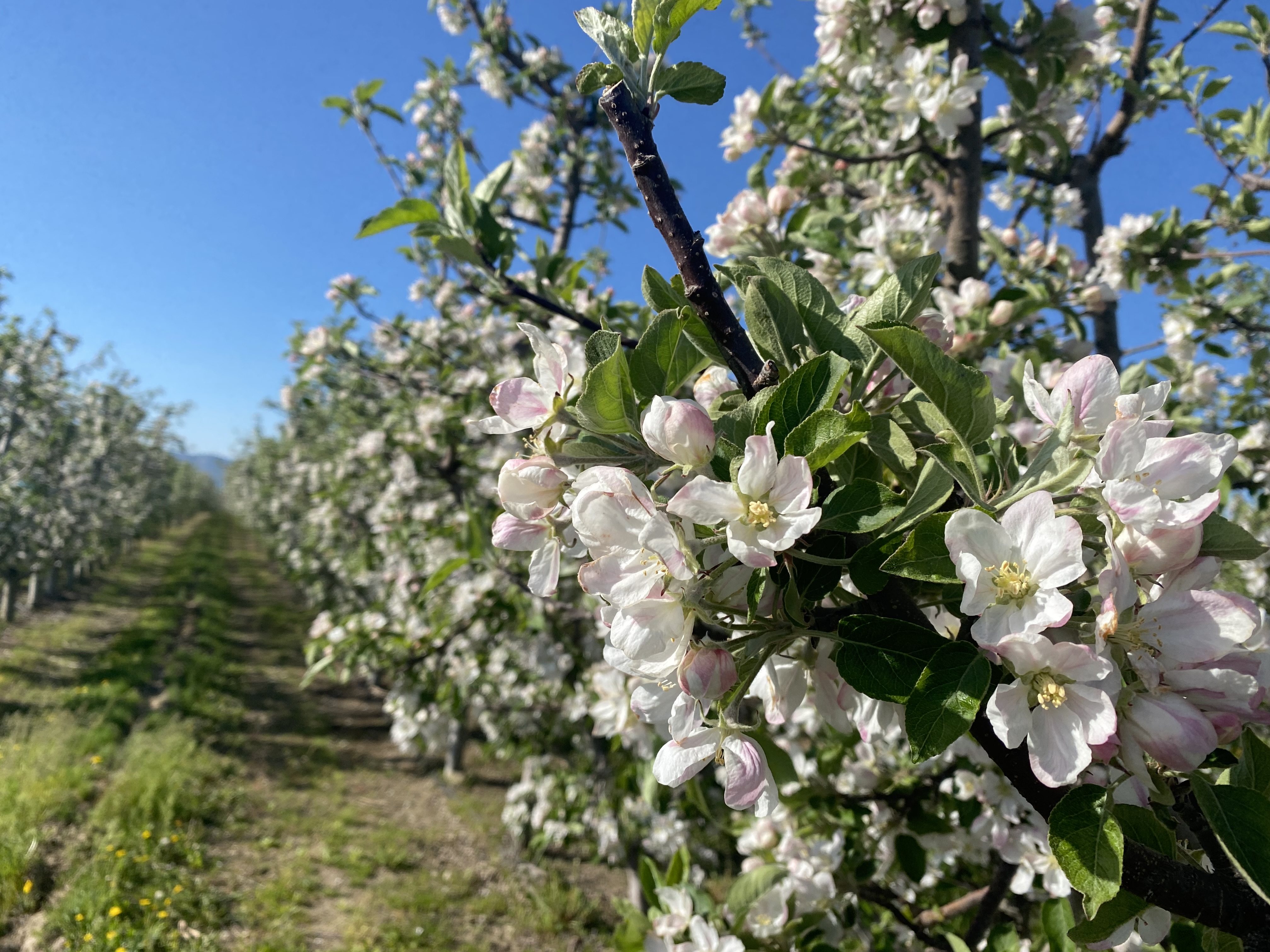
Red Delicious apples bloom in the strong sun of late April as bees work to pollinate them on Jim Willard’s farm eight miles north of Prosser, Washington.
(Credit: Anna King / Northwest News Network)
Then, Willard rolls his pickup past something he doesn’t want me to notice but it’s looming there in plain sight. It’s a massive pile of old blackened vines, a nearly two-story smash up: the pushed out pinot noir.
Willard refuses to stop the truck, and tears up a bit.
“Most people will go through and push the grapes up in the field and dry ’em out and burn them in the field,” he said. “I didn’t want to mess with them. I just drug ‘em up here and pushed them up into a pile. Out of my way.”
Willard turns his face away to his side window.
He has taken out these wine grape vines that would require about 24 inches of water this summer and fall, to replace them with baby concord juice grapes. Those baby grapes will take about half the water, about 10 to 12 inches, this year. He also plans to leave more grapes unpruned and uncultivated and more ground fallow, still. He said he knows there will eventually be a bit of stress on his plants but he said he hopes he will still get enough water to save his apples and remaining grapes.
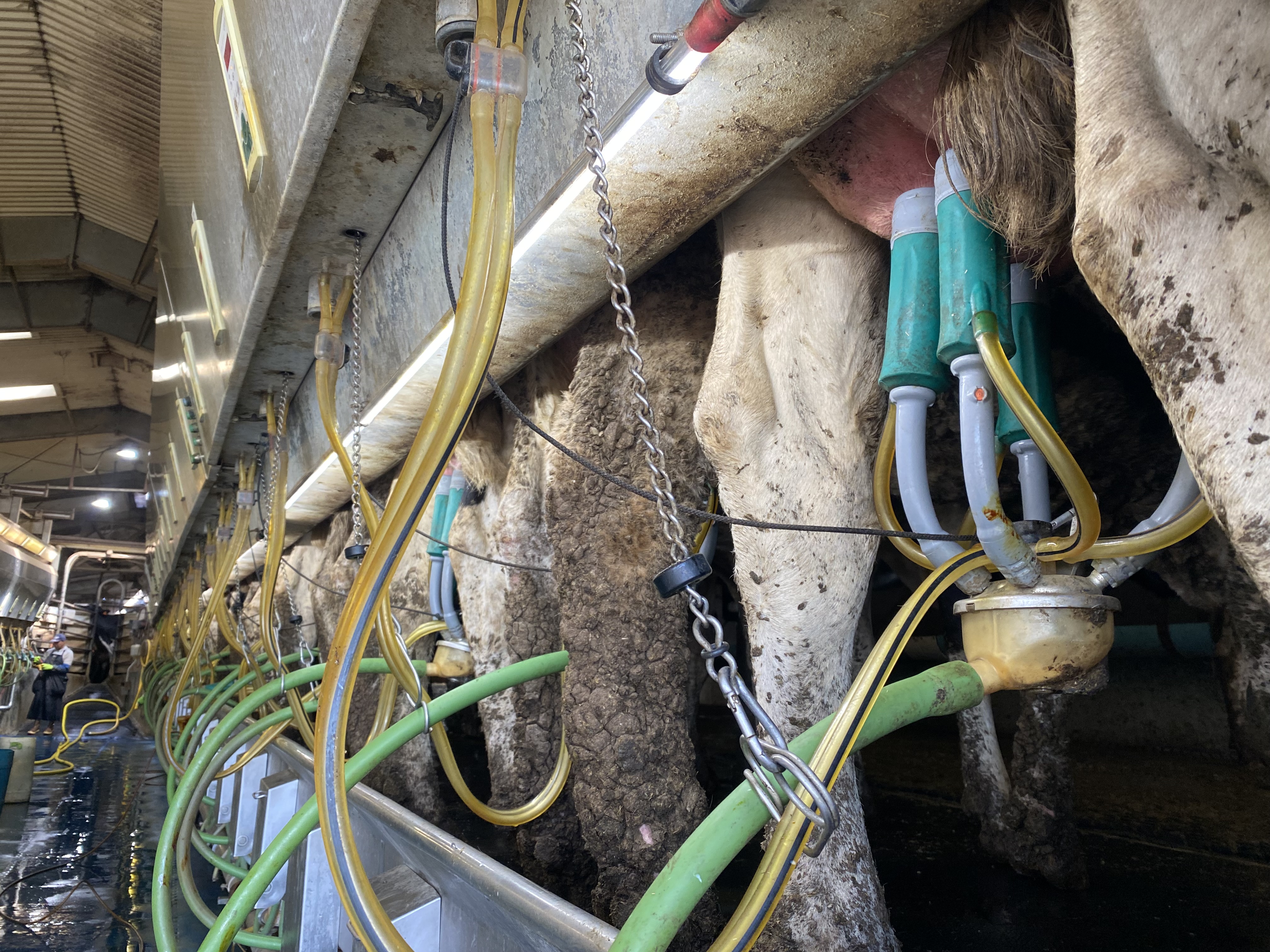
Cattle back up to the aisle to be milked at Jason Sheehan’s farm four miles east of Sunnyside, Washington in late April.
(Credit: Anna King / Northwest News Network)
Dairy stress
About 10 minutes away from Willard’s place, about four miles east of Sunnyside, is Jason Sheehan’s dairy operation. Stations clank and rattle as the cattle arrange themselves down the aisle and line up rear-side to the aisle to be milked. Heavy udders are bulging. Automatic milkers with suctions are attached to their teats by a pair of deft-handed workers.
“Yeah, they’re still milking the morning shift,” Sheehan said.
This farm is about 2,000 acres, a complex of dairy barns, buildings and surrounding crops.
Like Willard with his grapes, Sheehan is also largely in the Roza Irrigation District. He also knows he’ll be short of water this year.
“Drought is just one more stress that stresses the bottom line and costs farmers more money,” Sheehan said.
Sheehan recycles water throughout the farm five to six times: First, the well water cools the body-temperature milk down, then it waters cattle. Then their urine is treated and used for washing down aisles, the milk parlor and barns. Then, the recycled water is finally used to irrigate crops.
“I think like anything you’ve got, to keep a clear head and look forward and figure out how to get through the tough times,” Sheehan said. “I think that’s one thing that everyone in ag is good at, is figuring out how to get through the tough times.”
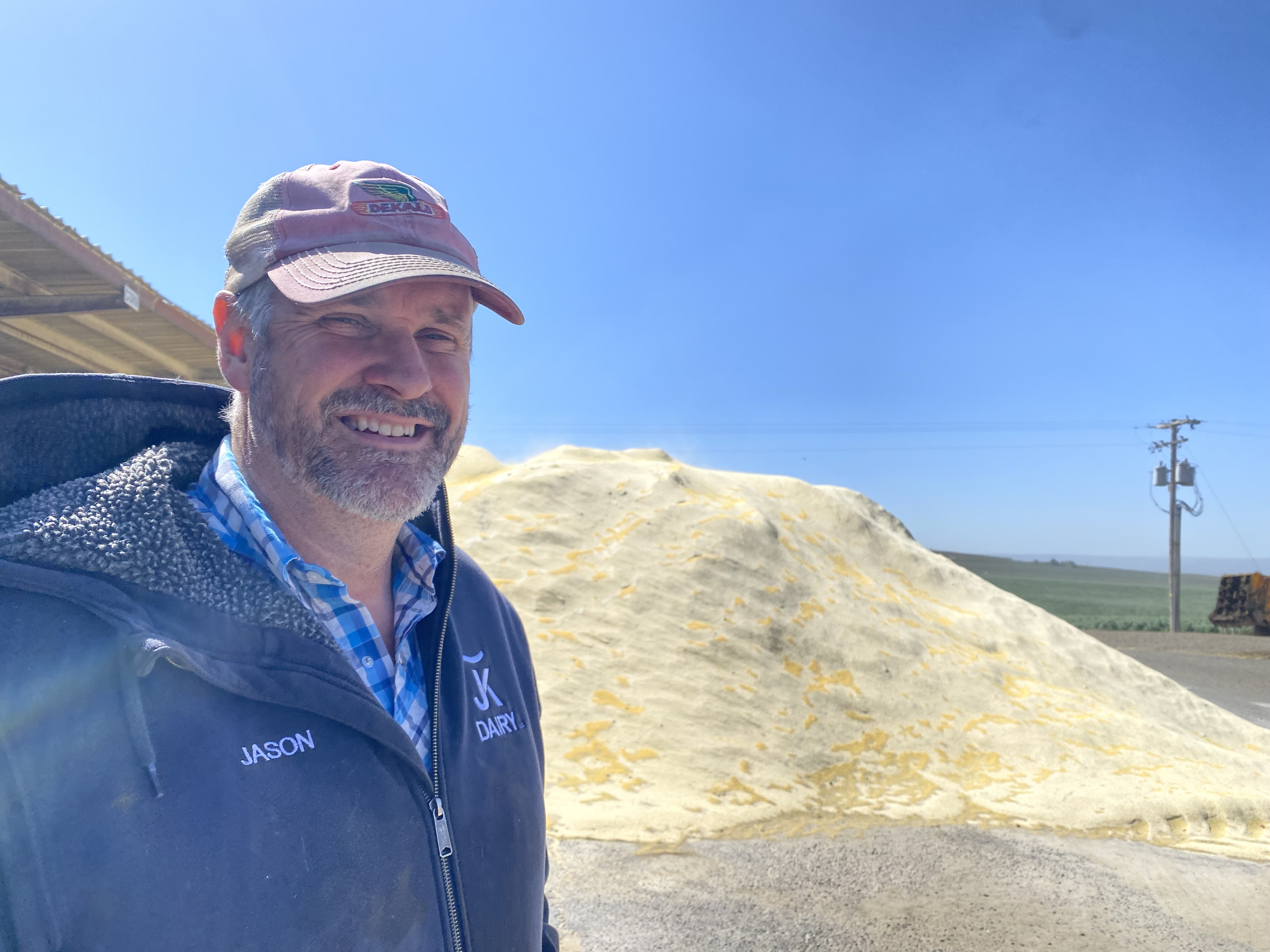
Jason Sheehan grins April 19 despite the tough conditions and water situation this year, in front of a pile of corn for his cattle, four miles east of Sunnyside, Washington.
(Credit: Anna King / Northwest News Network)
Still, with less water this year, Sheehan knows that he’ll have to apply less dairy cow manure, or what’s called nutrient, on his fields with less water. He’ll ship the rest to more far-away farms. He’ll have to buy more outside feed for his cattle. That all means a more expensive year.
Sheehan said, in the future, more droughts are coming, and the Northwest needs more reservoirs to catch water if snow doesn’t accumulate and hold.
“We need to look at additional storage for more water and that’s to help the fish and the farms and the communities,” Sheehan said. “That’s because when you get into tough economic times like this you find out that a lot of the money flows through the farms and the local communities and it becomes difficult for everyone.”
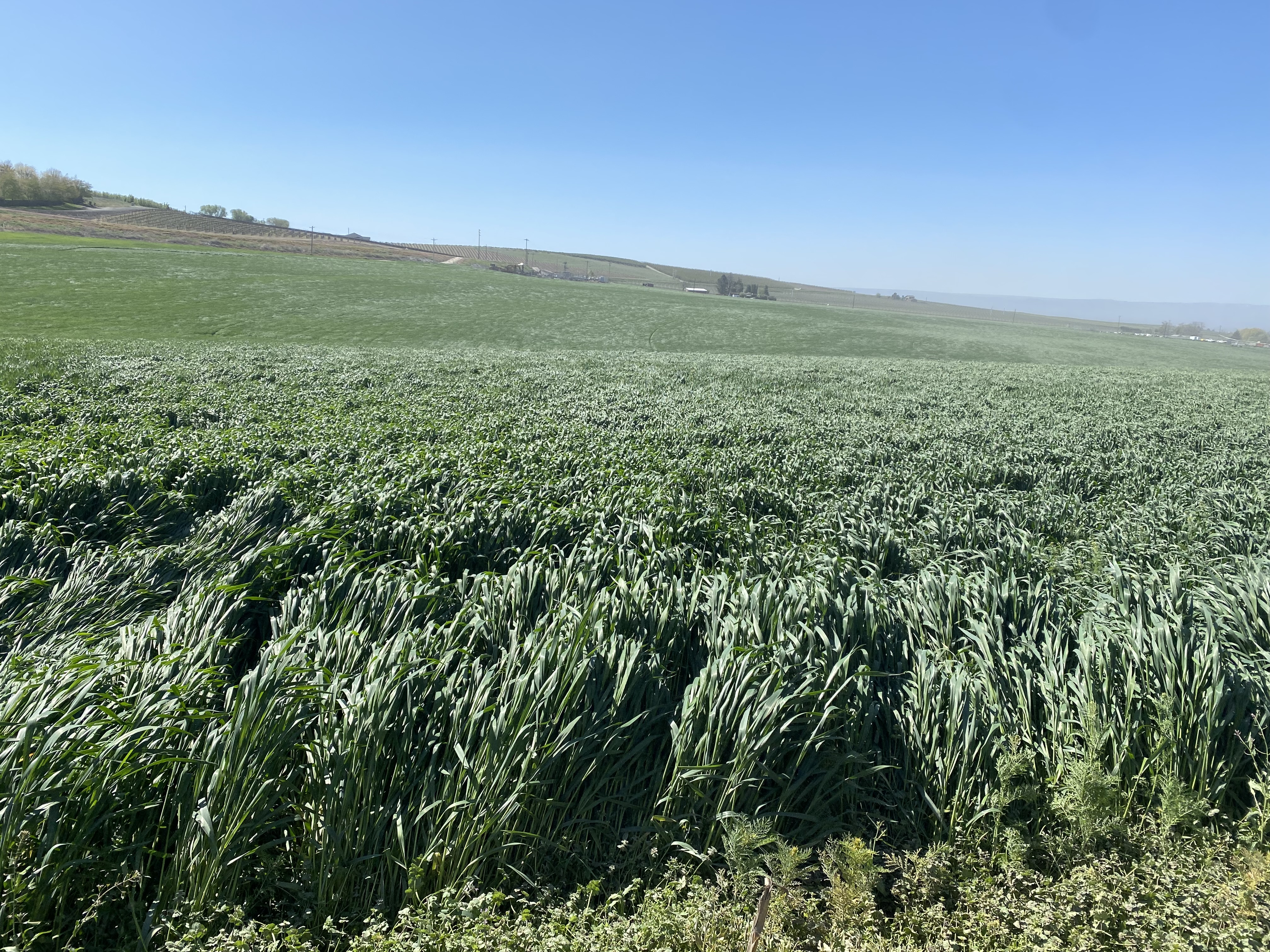
In April, a sea of triticale, a crop that will feed cattle, undulates in the wind on Jason Sheehan’s farm east of Sunnyside, Washington.
(Credit: Anna King / Northwest News Network)
Already hurting
Across the Yakima, Kittitas and Columbia valleys, farmers are already hurting. Their prices for inputs are up. Everything from tractor tires, fertilizers and labor. Interest rates are up from 4% a couple of years ago to about 9%. Crop prices are in the bucket.
Cherry harvest last year got clobbered by California’s late season. Some Northwest growers didn’t even bother to pick. The apple harvest was too heavy, flooding markets with fruit. Grapes, hops and hay are hurting too, leaving farmers to rip them out or leave many fields idle.
This water shortage leaves farmers rationing all summer and some might have to turn the spigot off in August or September instead of mid-October. The last big drought was in 2015, where junior water users had a low of about 44% of their regular water. That year, it cost farmers across Roza, Kittitas and Wapato districts nearly $150 million in lost crops, said Scott Revell, the head of the Roza Irrigation District.
On Sheehan’s farm, just outside the milk parlor, a sea of waist-high triticale, a crop destined for cow mouths, whips in the wind. It sounds and looks like the undulating waves of a sweeping and verdant sea. A teasing vision, in a year of parch.

